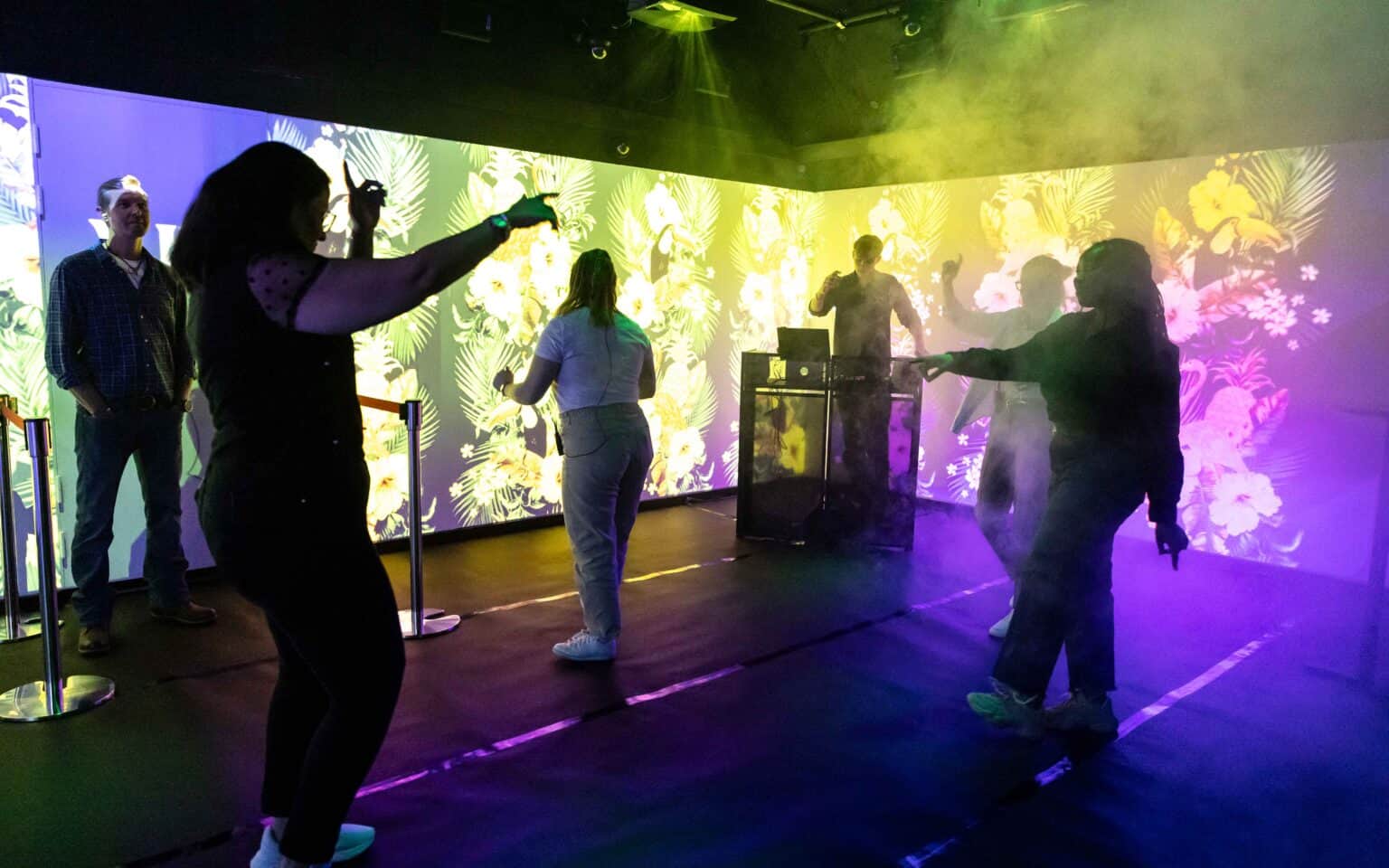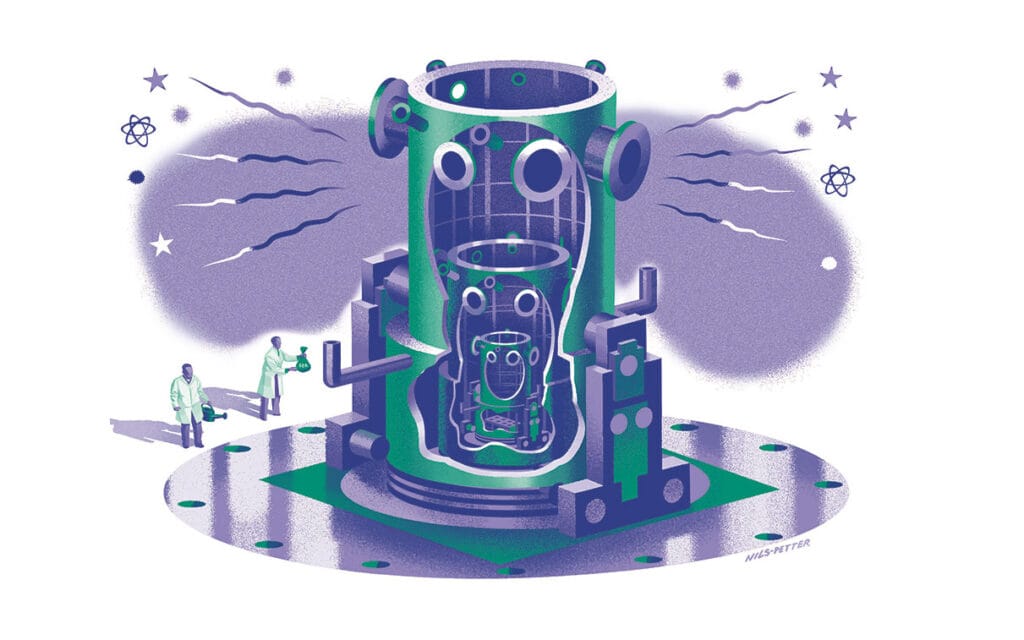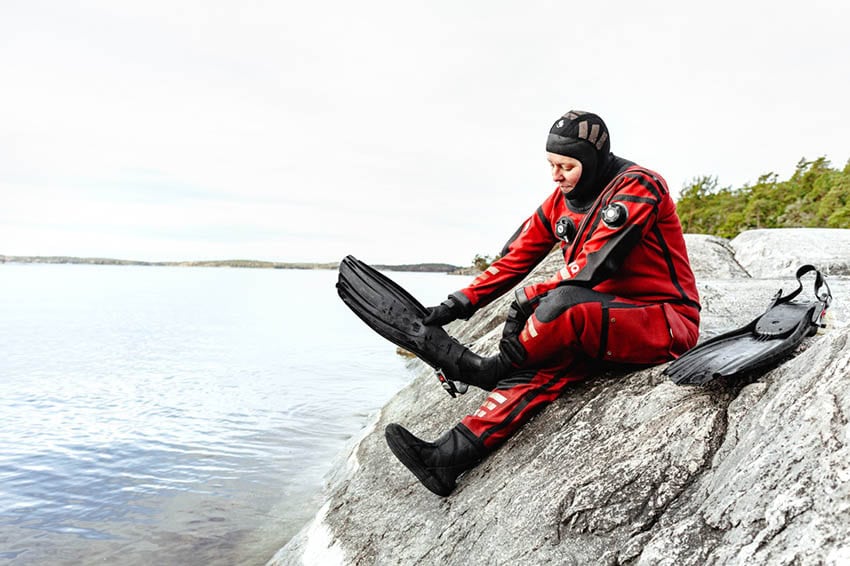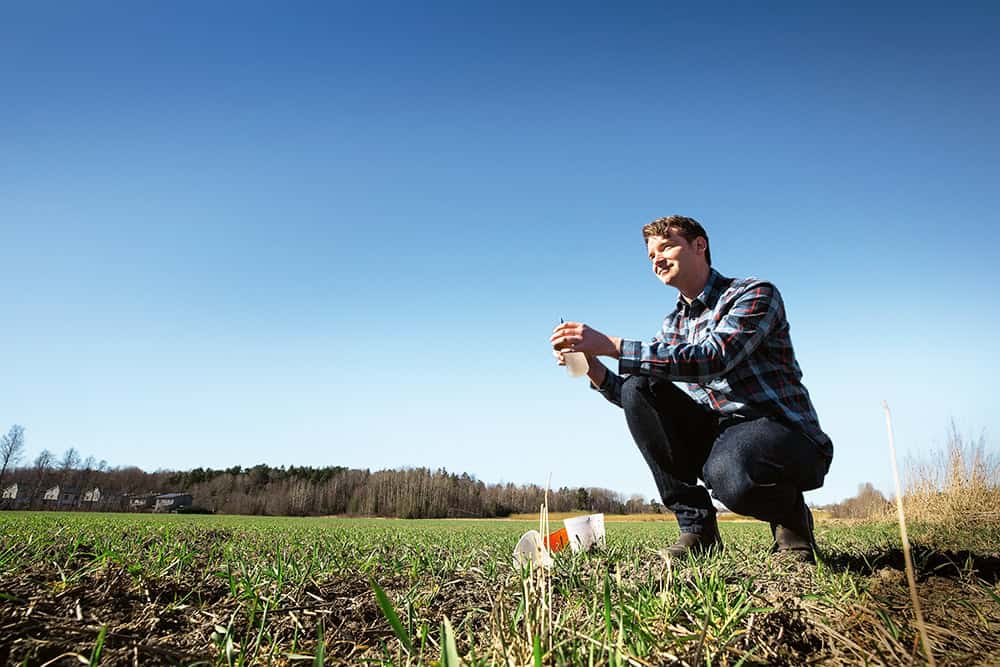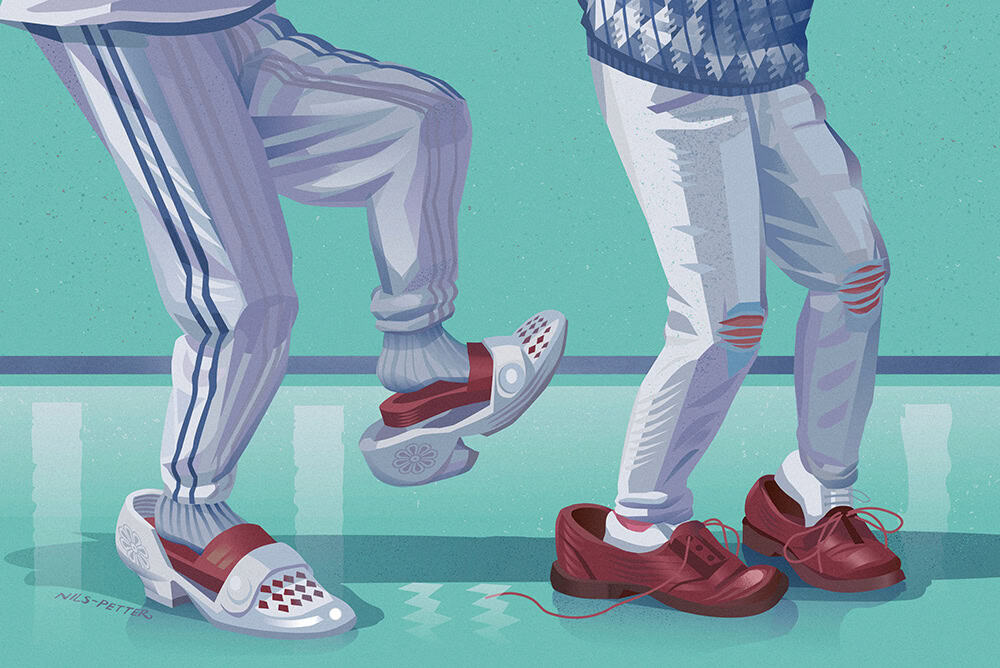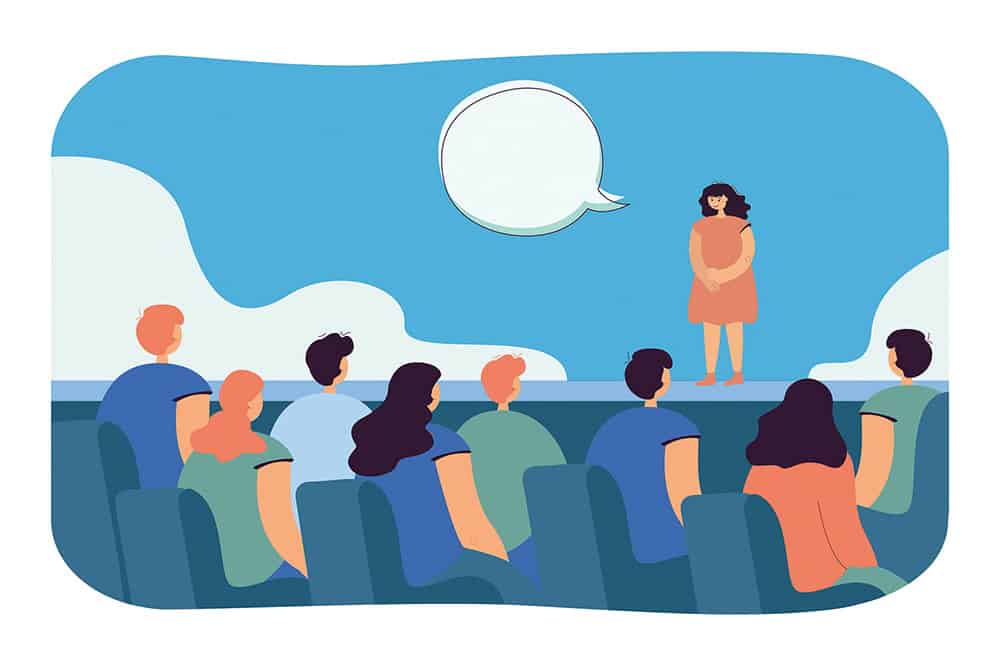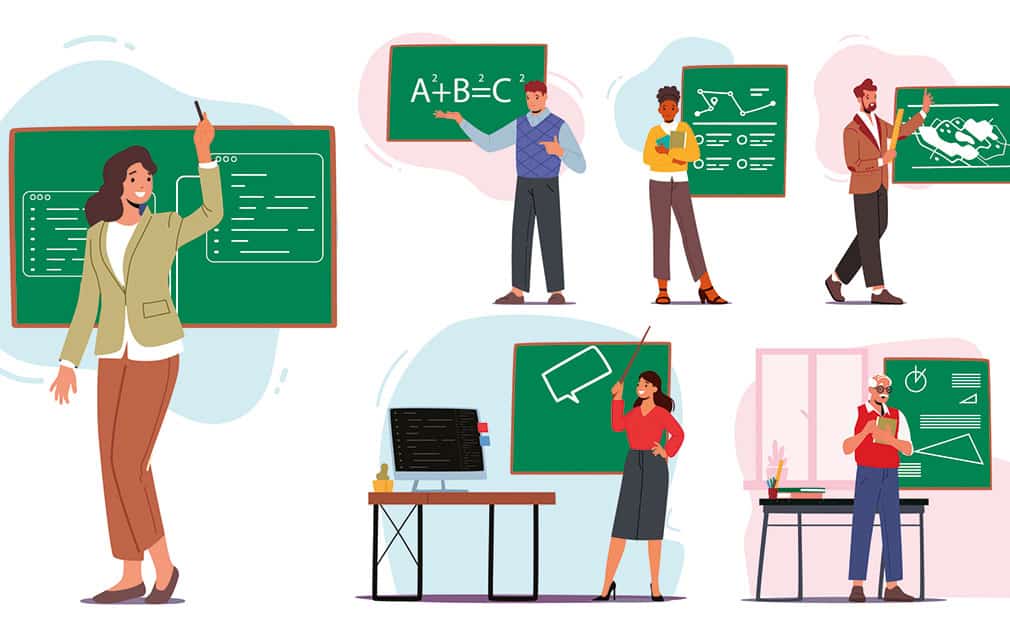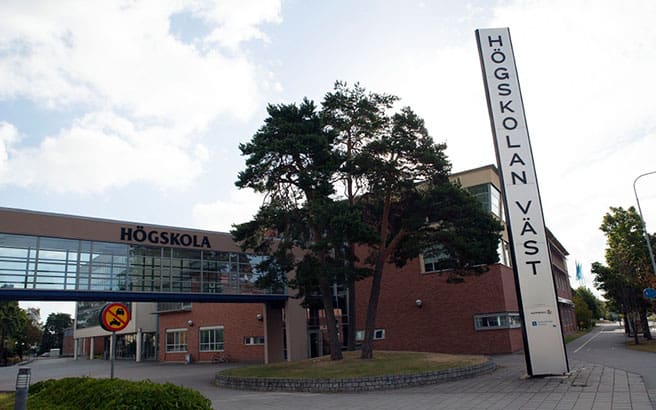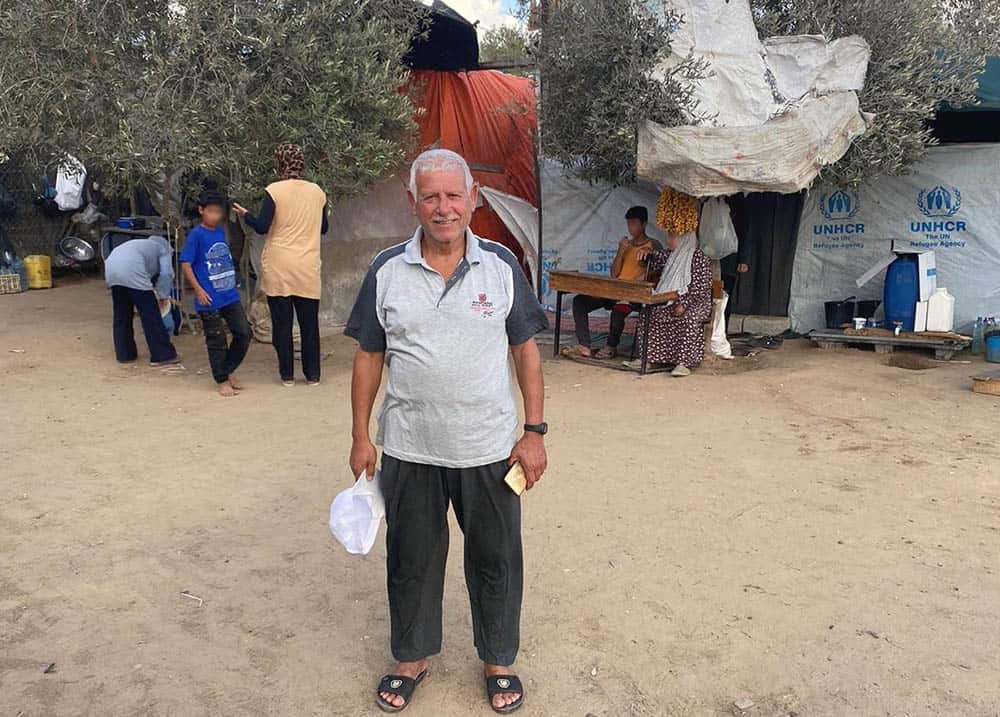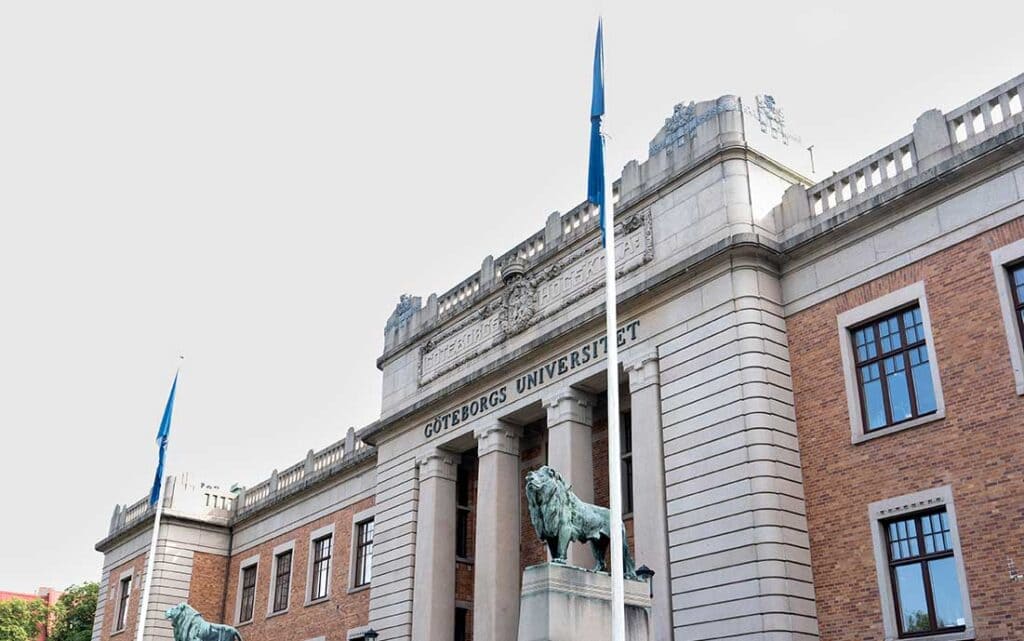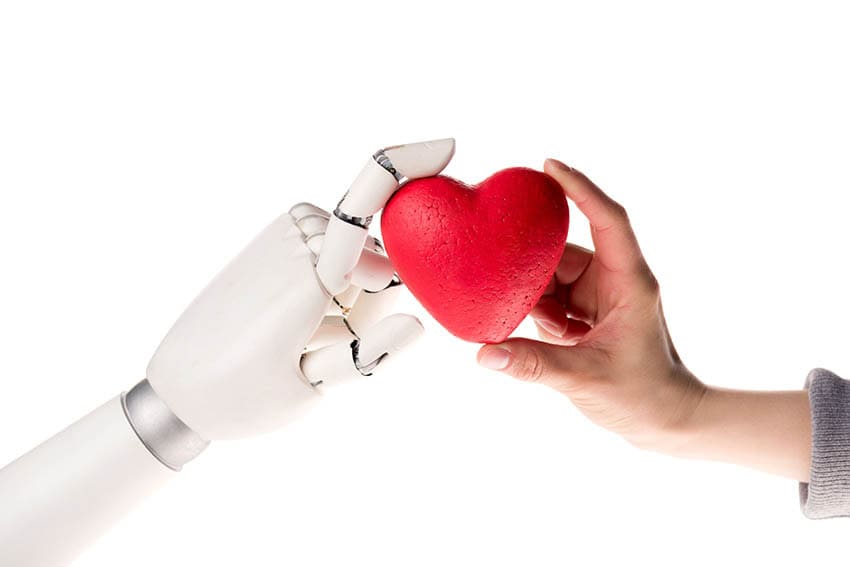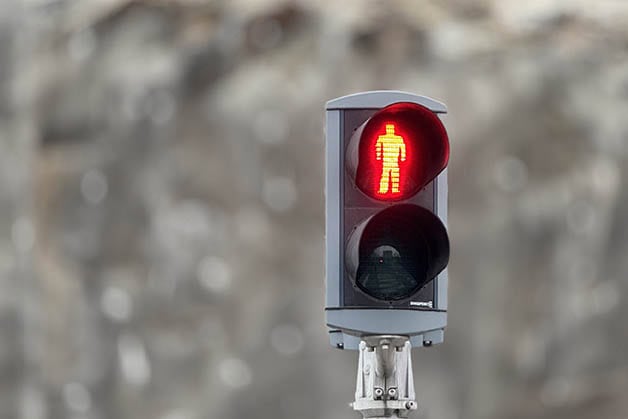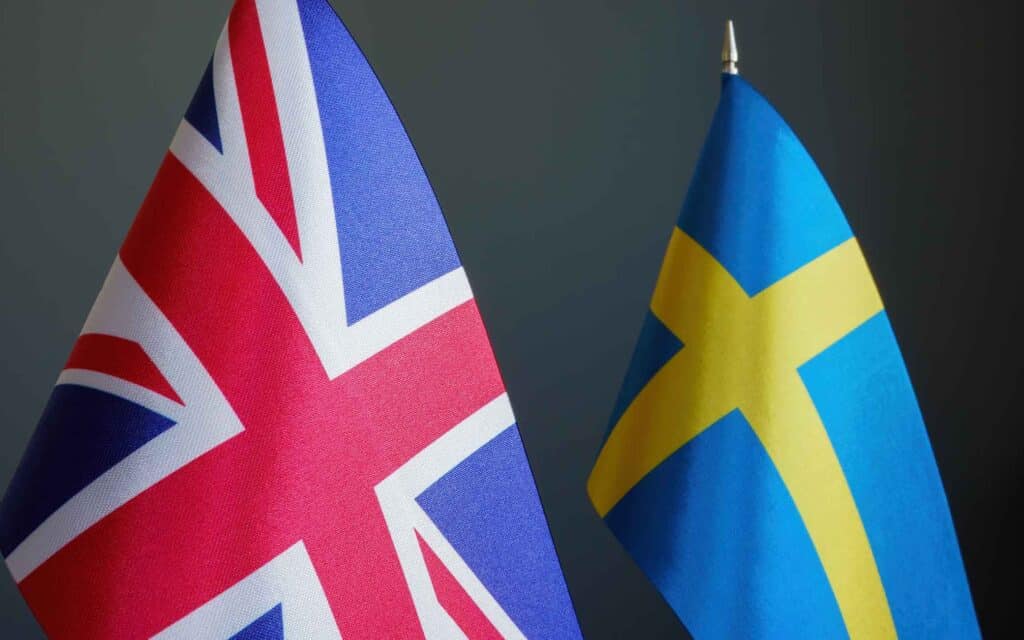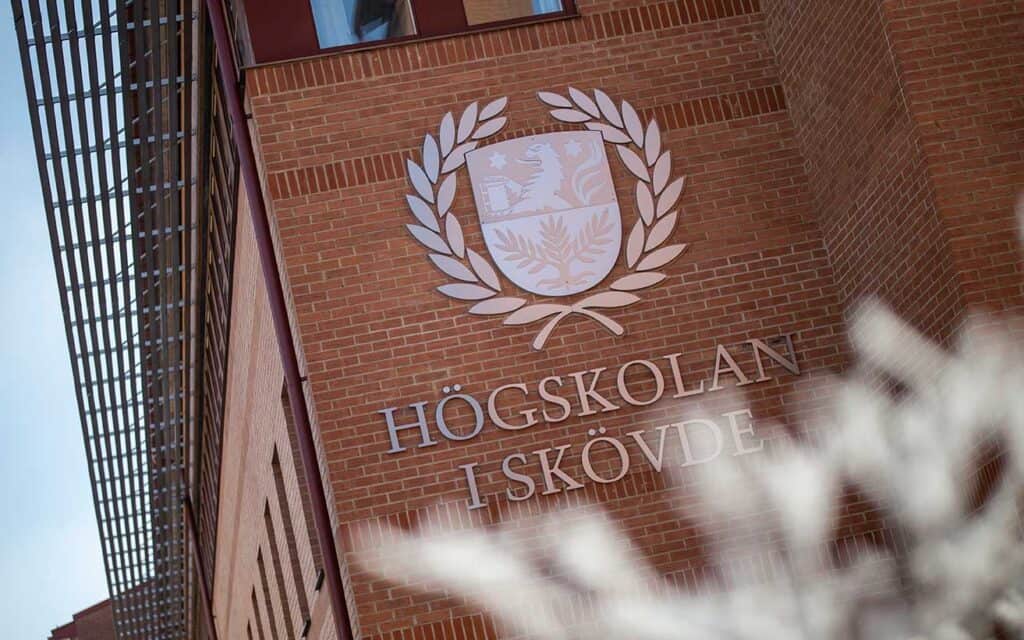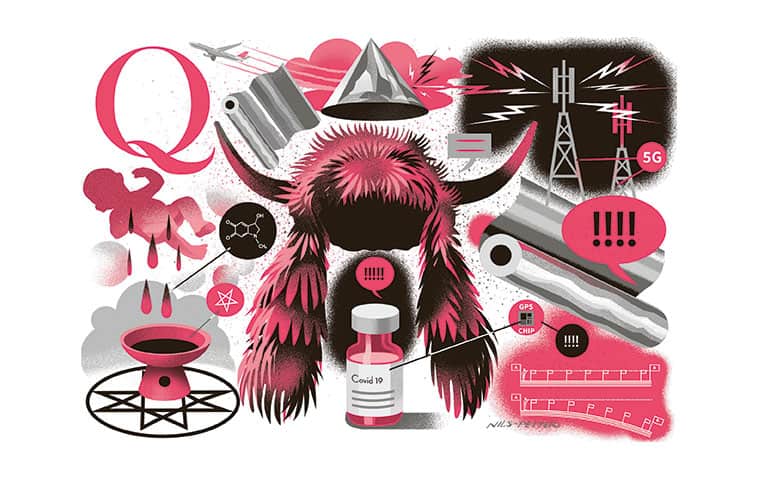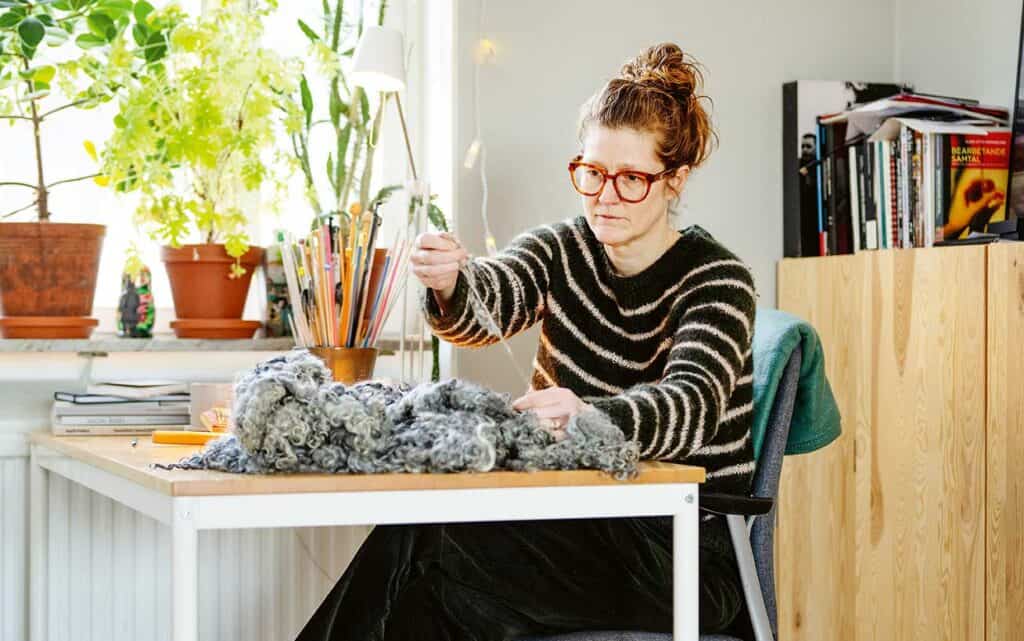It is Saturday evening in Östersund. At the Valkyria nightclub, green and violet light colours the smoke that periodically fills the air. The DJ stands in his booth and controls the mixing desk while raising his left arm, waving it in the air in time to the pulsating house music.
The floor is full of people dancing with glasses in their hands – everyone here has been given a drink ticket to redeem at the bar.
But in reality, the time is four o’clock on a normal Thursday afternoon, and the nightclub is actually a room at the top of one of the buildings on the Mid Sweden University campus in Östersund.
The bar is an office table at standing height, the long rows of bottles behind it are being projected onto the wall and the drinks in the glasses are non-alcoholic.
Not a DJ 15 minutes ago
The guy in the DJ booth had no idea 15 minutes ago that he was a DJ, just as the man standing with a stern face and folded arms watching the club guests did not know that he was a security guard. Like the people who are still dancing cautiously on the floor, they only know that they are extras in a research project run by the Risk and Crisis Research Center, RCR. The nightclub scenario is the basis for a number of experiments that will take place later during the autumn. Today, the whole thing is being tested in a pilot exercise.
The research at RCR is interdisciplinary and has three main themes: risks, crises and sustainability – the latter based on the idea that an unsustainable society can in itself create risks and crises.
On this particular day, the focus is on the four-year project ‘People, measures and resilience: New ways to study risk communication, responsibility and resilience’. In short, it involves studying people’s knowledge, willingness and capacity to deal with major societal disturbances. The aim is to provide knowledge about how communication during crisis situations should be designed for optimal effectiveness in different contexts and for different individuals.
“How should you communicate with people whose first language is not Swedish?”
Minna Lundgren
“How should you communicate with people whose first language is not Swedish, for example?” says research group leader Minna Lundgren, who is a senior lecturer in sociology. “Or with people who have low levels of trust in state authorities?”
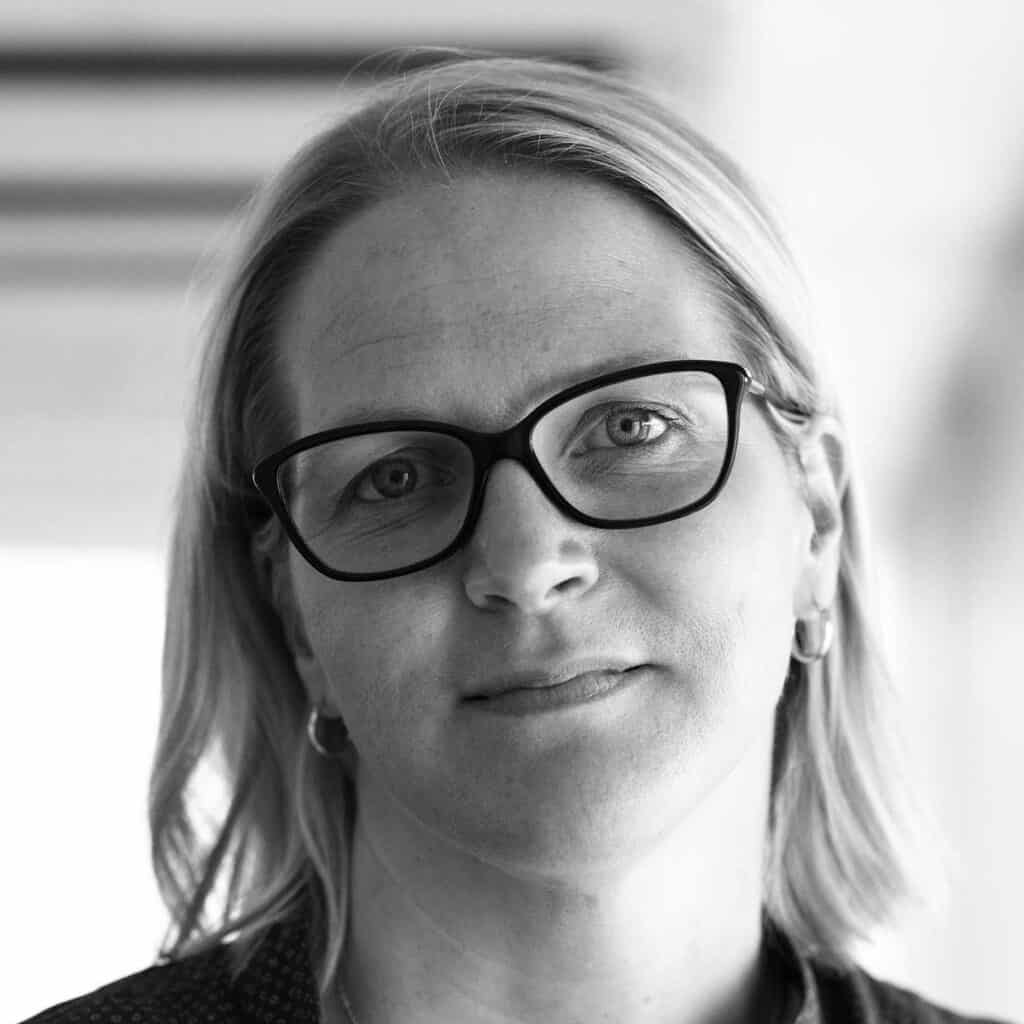
Minna Lundgren
Senior lecturer in sociology
Pilot experiment
The pilot and the upcoming experiments have been preceded by a large number of interviews, a national survey in collaboration with Statistics Sweden and a smaller survey among high school students with questions based on the Swedish Civil Contingencies Agency (MSB) publication ‘Ready, steady – The story of a crisis. Tips on how to get through it,’ she tells us.
An important, indeed crucial, part of RCR is its simulation lab, a rectangular room equipped with 360° projection, surround sound and more, as well as hidden cameras, microphones and other technology to enable observation of everything that happens there from an adjacent control room. These features and the simple scenography mean it can be transformed into different types of room, much like a black box in a theatre.
When the researchers wanted to study how people behave in the event of a power outage, it was turned into a two-room apartment; when the Mid Sweden University’s tourism research centre, Etour, wanted to test how signage affects tourists’ choices, the room was turned into a zoo; and when emergency personnel wanted to practise working among people in a state of panic, the room became a shopping mall.
So the lab is also used by external groups who want to run different kinds of exercise in a simulated environment. At the same time, RCR can get input into its research and valuable insights into how the lab can be improved.
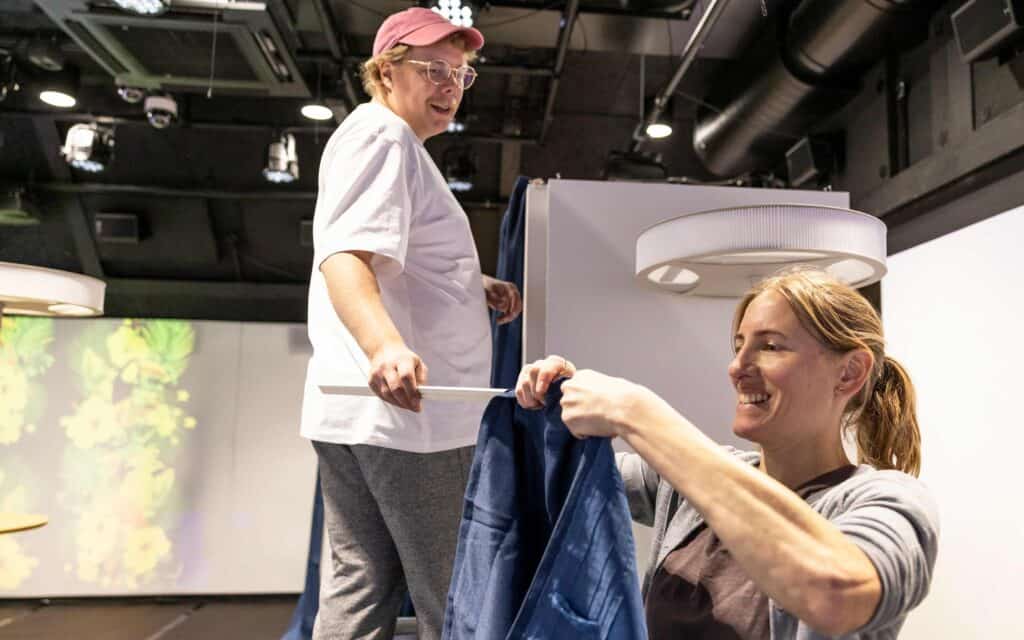
Other researchers are welcome
Of course, researchers at other universities are also welcome to come here and use the lab. For example, RCR participates in the EU-funded project Futuresilience, which aims to improve the ability of agencies to react quickly to crises, and through which a large number of higher education institutions in Europe come to conduct tests in the lab, says the Head of the Center, Kari Pihl.
On the table in front of her are receipts from various hardware stores. They reflect some of the purchases that have had to be made for today’s experiment, such as screwdrivers, masking tape and PE-coated cardboard.
The latter, we learn, was recommended to her and her colleagues for covering the floor of the simulation room to protect it against any spillage from the ‘nightclub guests’’ glasses, as there are a number of speakers in the floor that can cause vibrations.
Arranging experiments like this is very hands-on. When Universitetsläraren arrived at the lab earlier that day, Pihl and technician Per Alexander Esbjörnsson were standing on ladders and attaching dark curtains to the folding wall that had been set up in the room to form a corridor from the fake nightclub entrance to the club itself.
That is where the research participants are now queuing to hand in their coats, have their names checked on the guest list and get their drink tickets.
Because now the pilot experiment has begun, and Lundgren, her colleagues and we journalists are hiding in the control room.
Students divided into groups
The participants in the pilot, mostly students from the university, have been divided into groups. They only know that they are going to participate in an experiment involving a violent incident in a nightclub setting.
For reasons of research ethics, they have also been told that they will not witness anything violent or see any injured people. They have been urged to act as if it were a real situation and to log into a chat group on WhatsApp.
”You move around together, make contact with research participants together, go to the bar together”
The extras, who are already on the dance floor, have all received instructions on a small piece of paper.
Some of them will play regular club-goers who know each other: ”You move around together, make contact with research participants together, go to the bar together”. One has been given tips on how to act as a cloakroom attendant , others what to do as bartenders.
A woman has been told that she will receive a text message and that she should then run out onto the dance floor and shout that someone is ”shooting wildly outside the club”, as it says on the note.
The scenario being studied is how people act during a violet incident and how they take in and share information about it.
This day is mostly about how the scenario is set up and other matters that may need to be fine-tuned before the proper experiments take place.
Fills up the dancefloor
We see on the screens of the control room how the Valkyria dancefloor fills up slowly. After just a few minutes, the woman who is to sound the alarm comes running onto the floor and tries to get people’s attention.
Quickly, many of them start fiddling with their phones and heading for the exit.
A third group, ‘friends’, who are not in the ‘club’, can follow how events unfold through news flashes, (predesigned by RCR’s researchers), on their phones. When they realise that something serious is happening, they start texting their friends at the club.
”Is someone shooting there?”
In the control room we can follow the flow of news flashes as well as the text messages. ”Is someone shooting there?” writes one and continues ”The newspaper says that it’s happening outside, but the tv says it’s inside”.
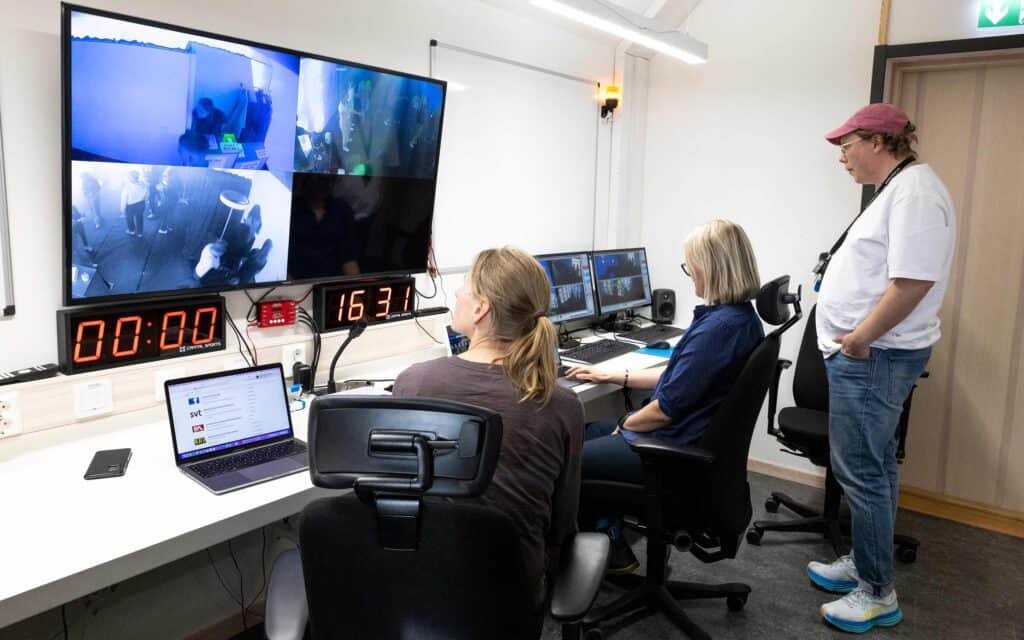
This is one of the things researchers want to study: What information in their news feeds do media consumers, (in this case friends), choose to believe and how do they act upon what they read?
Do they pass on the uncertainty markers that the media’s reporting contains, such as ”says that” and ”received information about”, or do such details disappear when they pass on the information, so that unconfirmed information, possibly rumours, becomes truth?
Based on research report
One of the bases for the questions is the research report Allt tyder på ett terrordåd, (Everything indicates it was a terrorist act), which was published by the Institute for Media Studies and is based on a study by a number of researchers at the Department of Journalism, Media and Communication at Gothenburg University about the 2017 terrorist attack on Drottninggatan in central Stockholm.
The report shows that such markers of uncertainty are often filtered out when information is passed on. “You get a kind of information hole,” says Minna Lundgren.
“No one takes one report on TikTok seriously, but when you see ten, you start to wonder whether there’s something to it and check other, more trustworthy, sources.”
Minna Lundgren
In recent years, there also seems to have been a shift in how news like this is both disseminated and received. “During the pandemic,” says Lundgren, “we could see how a lot of things were questioned, and since then many people seem to have started to triangulate information.
No one takes one report on TikTok seriously, but when you see ten, you start to wonder whether there’s something to it and check other, more trustworthy, sources.”
At the same time, she and her colleagues want to find out what effects things like training and knowledge can have on how people act in this type of situation.
She exemplifies with an experience of her own: when she was 14, her family was on a road trip, and at a rest stop there was a notice that explained how to get out of a car that is upside down. “I hadn’t thought about it in all the years since, but then, five years ago, I overturned my car in an accident.
The first thing that came into my head when I was hanging upside down in the car was how to unbuckle the seat belt, protect my neck and get out. That helped me to stay calm.”
Focus on misinformation
Also in the control room this Thursday is Maja Klinga, a doctoral candidate in sociology at Mid Sweden University.
In the first article of her forthcoming compilation thesis, she will focus on how misinformation can be understood and spread. “So today, I’m mostly interested in how the friends outside the ‘club’ act and the chain of communication between them and the research participants,” she says, “but it will also be exciting to study the extent to which practice in advance affects how people behave.”
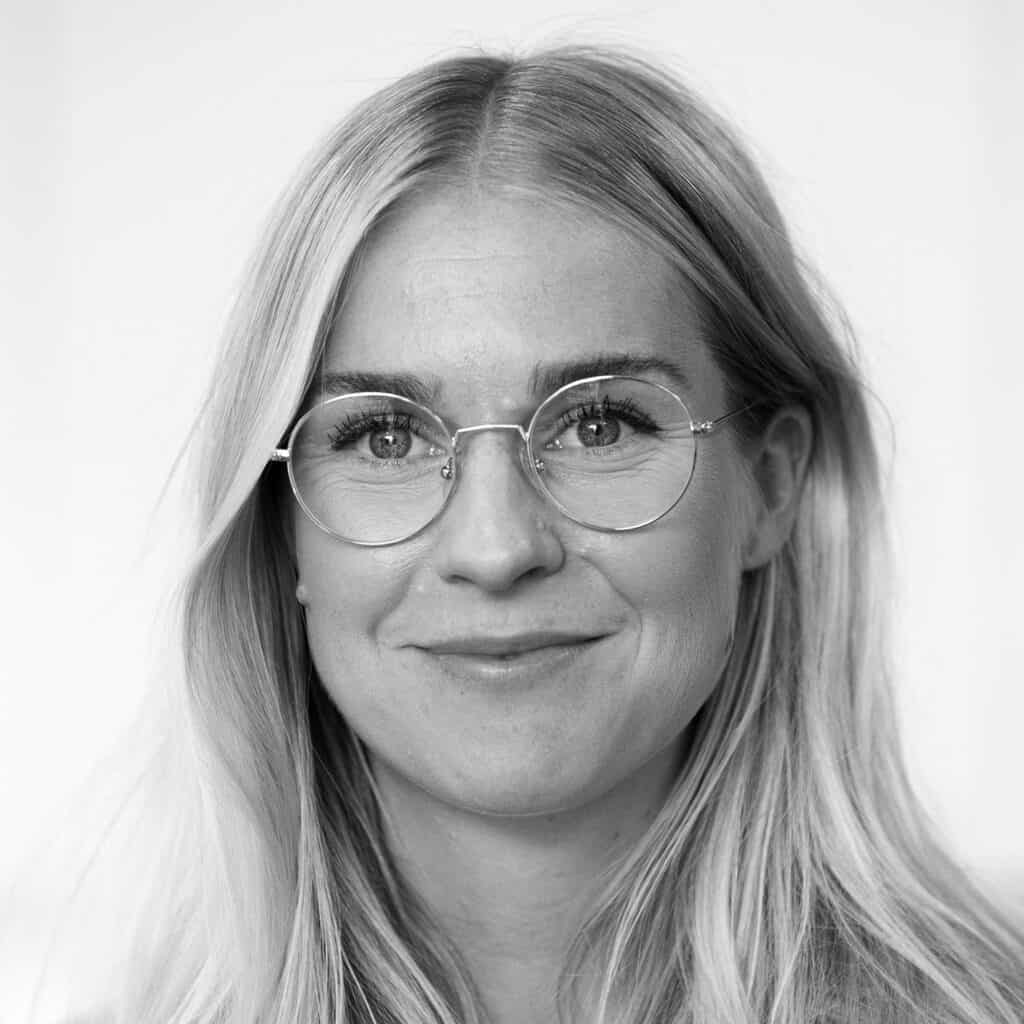
Maja Klinga
Doctoral candidate in sociology
She adds that she and the other researchers made sure to put in a fairly high degree of uncertainty when designing the fake media reports included in the pilot exercise.
Arranging this kind of experiment comes with high ethical demands. That is, of course, one of the reasons why Universitetsläraren is not allowed to observe the real exercise, just the pilot. The RCR researchers are also careful to check that everyone – both extras and research participants – is aware of the conditions.
Before everything started, Minna Lundgren asked everyone to think about whether they had unpleasant memories of past experiences that could possibly be triggered. She also said that a therapist was on site in case anyone felt the need to talk afterwards.
Things get chaotic
At the Valkyria nightclub, things rapidly get quite chaotic. A bunch of people are standing by the cloakroom and are trying to get out, but they are being prevented by the ‘security guard’, who has been told in his instructions that he is not to let anyone out.
After a quarter of an hour, Lundgren ends the exercise and the whole group gathers ¬ research participants, extras and researchers – for buns, soft drinks and a debriefing. Many people have opinions.
It was difficult to pretend to know people you had never met before, say several of the extras, and several of them wished they had been given more detailed instructions, “clearer direction”.
Everyone was sober
Laughter erupts when one extra says that one problem was that everyone was sober. ”That’s not usually the case at a club in the middle of the night.”
Someone else suggests that the whole thing should have started with some kind of exercise to make it easier for people to get into their roles. Kari Pihl nods as she takes notes.
When we speak on the phone a week or so later, she is very pleased with what came out of the pilot exercise.
“We realised, for example, that the research participants need to be at the club for a while before something happens, instead of, like now, the incident occurring when they had just arrived. So the pilot was invaluable.”
Risk and Crisis Research Center, RCR
Is an interdisciplinary research centre that develops and communicates knowledge about risk, crisis and security matters, often in collaboration with other bodies. Based at Mid Sweden University, Campus Östersund.
RCR Simulation Lab
In the lab, how people behave, react and learn can be studied by having them practise situations that cannot be practised in real life due to security risks. In the lab, users can:
- Recreate environments and situations that have already happened to learn more from them, as well as create potential future scenarios.
- Familiarise people with different situations before they encounter them in real life.
- Experience an imagined environment, for example a residential area before it is built.
- Experience how something feels, for example the evacuation a smoke-filled room.
The lab’s recording facilities also enable observation of what is happening in the lab and the use of video recordings for self and group reflection.
